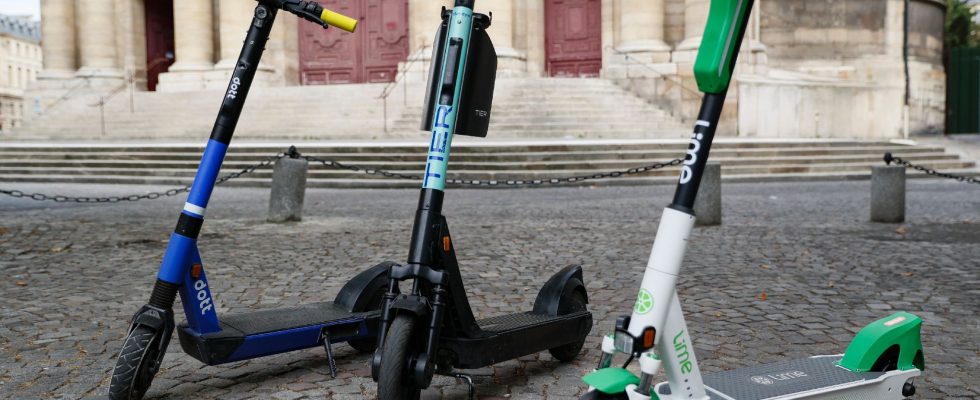As April 2 approaches, the date Parisians vote on whether or not to maintain an electric scooter service, tension is mounting among fleet operators. “If the no wins, there will be strong social implications. That’s why there is a bit of emotion when we talk about it,” says the manager of one of the three market players, who admits scrutinizing each number or statement that could influence the result. In fact, when the company Greenly, specializing in the carbon footprint of companies, evokes in a short study – and a few days before the election – the potentially significant effect of vandalism on the lifespan of scooters and therefore on their carbon footprint, his blood only turns.
“It’s a working hypothesis, justifies Alexis Normand, managing director of Greenly. We calculate that if vandalism reduced the lifespan of scooters to six months, their carbon footprint would become higher than that of a car with a combustion engine. .” But for professionals in the sector, this figure of six months does not pass, even in the conditional, because it does not reflect reality at all.
“Vandalism is almost non-existent. We barely lose 0.5% of our fleet every month. It is not this low rate that is the basis of the lifespan of our scooters”, says Nicolas Gorse, director general at Dott. Same story with its two competitors Lime and Tier Mobility, which evoke a phenomenon whose impact does not exceed the thickness of the line.
“At any given moment, only 2% of our scooters are not parked where they should be due to breakdowns, fraud or unscrupulous motorists who move them to occupy space with their own vehicle. This concerns therefore very few cases. And so much the better because otherwise, we could not survive: putting a scooter on the market costs us around 1000 euros. We can therefore only amortize them over several years”, explains Nicolas Gorse. “Certainly, in 2019, studies showed that the lifespan of these shared devices did not exceed five or six weeks”, we recognize at Lime. However, the latest generation vehicles are much more robust and their lifespan would reach six to eight years taking into account the current rate of vandalism.
A weight five to six times higher
“Many observers seem to have been stuck in 2018-2019. They do not take into account the incredible technological, industrial and operational developments, regrets Erwan Lepage, director of public affairs at Tier Mobility. In Lyon, our scooters will begin their fifth year of activity! And thanks to our new reconditioning line, located in France, their effective life will reach seven years.” It must be said that the design has evolved a lot. “The weight, five to six times higher than a commercial model, limits vandalism. For the screws, we use specific bits. And via our app, we have set up ‘no go zones’ preventing a vehicle park too close to a river”, adds Benjamin Guerpillon, operations manager for France and Belgium.
That doesn’t mean everything is perfect. In Paris, bottlenecks persist since there are only 15,000 places for as many scooters. In practice, it’s even less since works and ephemeral terraces permanently reduce the number of available pitches. In addition, a minority of users do not behave properly by not respecting the rules of the road. However, there are many solutions, plead the actors of the sector: registration of scooters and video-verbalization, prohibition of use for minors, reduction in the number of operators, increase in the number of parking spaces reserved for scooters…
“The problem is politicization and the lack of real debate on the merits,” says a specialist. But one thing is certain. If Paris abandons its torch of leadership in carbon-free micromobility, other cities will be happy to recover it.”
